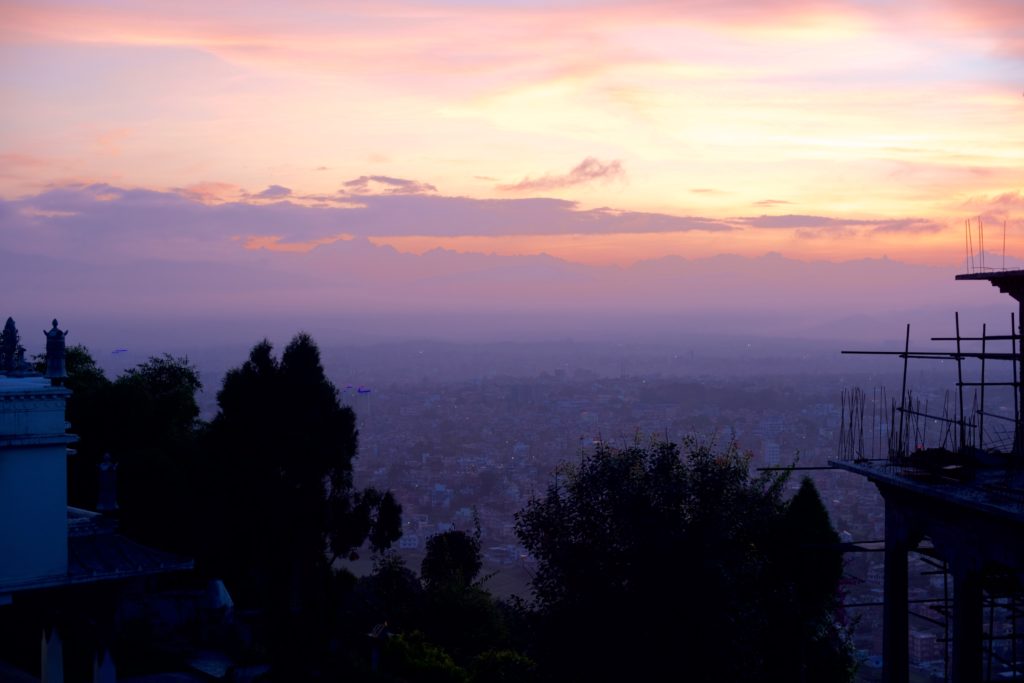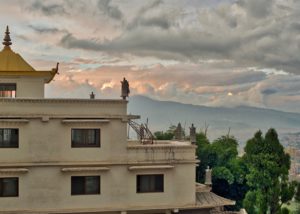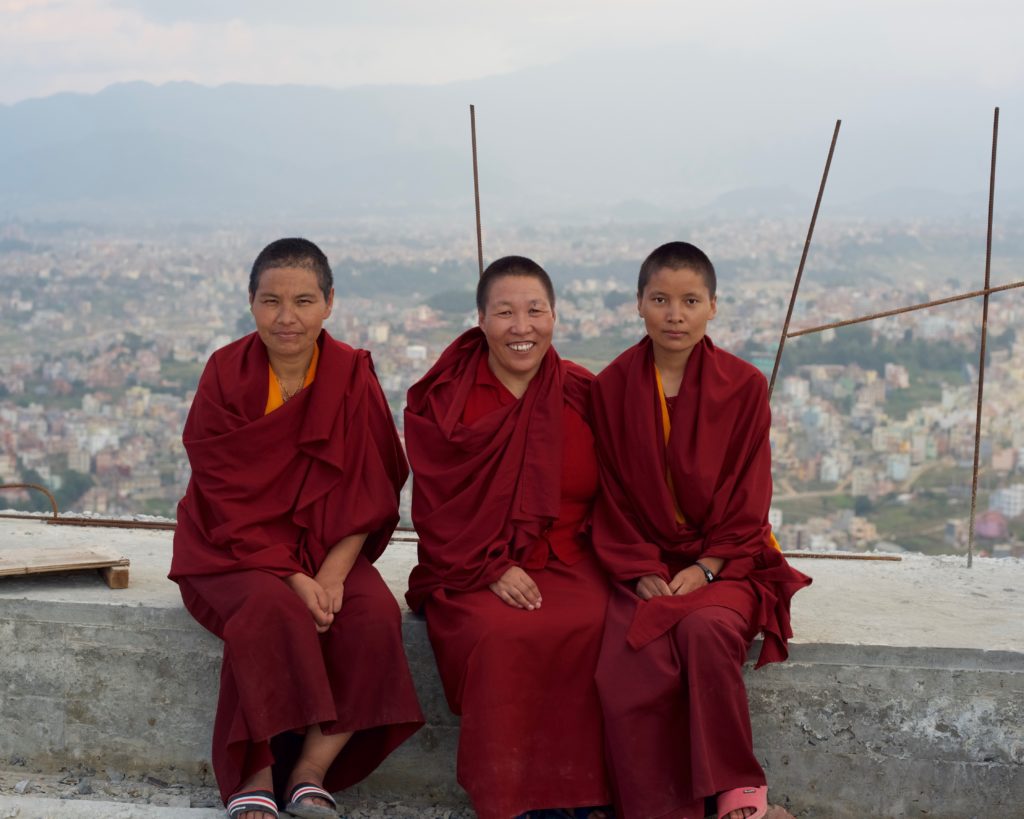My room sits on the 3rd floor of the Shedra. From my window I see the old Lakhong (temple) on the left, with the shell of construction of the new Lakhong to the right. Below me pass the Anis from the school, Shedra and Trasang going about their daily routines.
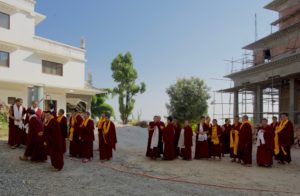
In the distance between the buildings is the city of Kathmandu. Around 8 kilometers into the city, as the crow flies, is Tribhuvan International Airport where people begin and end their Nepali adventures. Most days, the Monastery is in the flight pattern. From my window I can see planes leave the ground, turn, and circle directly over us here in Chobhar one after the other. Sometimes I picture the people feeling a little nervous, the angle and lift of takeoff pushing them into their seats. I sometimes take a moment to wish them safe travels.
Once every morning and afternoon I sit on my bed with this scene spread out before me for meditation practice. In the early morning and late evening the lights of Kathmandu fill the scene. One morning I saw most of the lights disappear in a blackout along with the lights of my lamp in my room. Each morning I follow the instructions given to me to settle my mind and body and generate a compassionate and an unbiased attitude, to let go of fear and hope to just “let it be”. This doesn’t mean that I have no thoughts or that strong emotions never arise in me. Meditation is a practice fraught with paradox. While it includes effort, it is aimed at effortlessness. Rather than chasing thoughts away, the instructions are to let them settle until they are like passing ships or clouds that don’t require tending.
Meditation isn’t perfect (or should I say, I’m not a perfect practitioner). Somedays my mind is very busy or disturbed, in anticipation or in fear. But the practice reminds me to “let it be”. There were times when I wondered, “What’s the point of all this sitting and doing nothing? I could be out getting things done.” But despite my doubts I have persisted, coming back every day. In the long run I have found that this “nothing” has brought more peace and made me more equipped to deal with impermanence and the unexpected. At the same time, it has helped me appreciate the “good things” in my life; family, friends, good conversation, food and drink and such.
I believe that Mind is everything. By that I mean that we (no one else) are the masters our experience – our perspective. Obviously, we aren’t always in control of our circumstances. I’ve written quite a lot about how my circumstances here in Nepal are dynamic and sometimes difficult. My mind, my perspective on this roller coaster of life determines in turn how I respond/react; my emotions and my thoughts about it. When Buddhist talk about purifying Karma (a topic that often is misconstrued), they are talking about confronting and releasing old habits of mind, taking a new perspective; one that is based on compassion for oneself AND others. Ultimately we work to respond with more insight and skill. So, the “goal” of meditation is to develop a new perspective. I encourage you to try it. I’ll spare you the full quote, but the Buddha was clear in saying that one should not just accept that a practice (like meditation) is worthwhile but one should try it and determine if it has merit. It can be done in the spirit of whatever religion or non-religious perspective you might have.
Speaking of challenges and perspective… I now have my computer up and running again; in a fashion.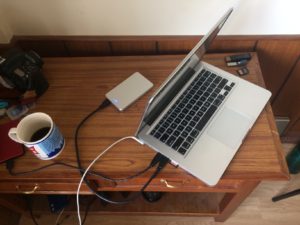 That grey box that you see connected to the computer is now the brains of the computer. Using the hard drive delivered from the US and some random flash drives that I brought with me, I spent the week diagnosing and fashioning a system that works. It is pretty or convenient but it works.
That grey box that you see connected to the computer is now the brains of the computer. Using the hard drive delivered from the US and some random flash drives that I brought with me, I spent the week diagnosing and fashioning a system that works. It is pretty or convenient but it works.
As promised in my last post, I will now set to work on the photos that I took during my trip to Pokhara and Muktinath.

